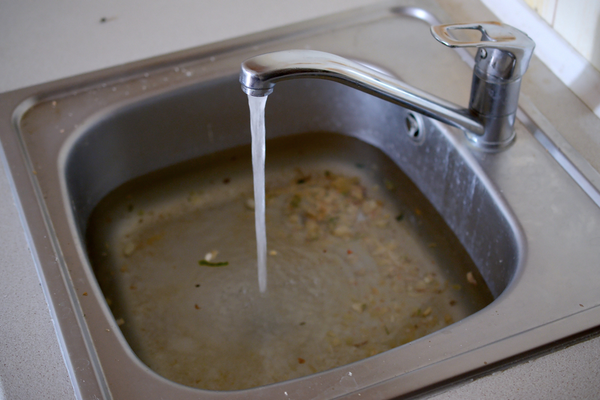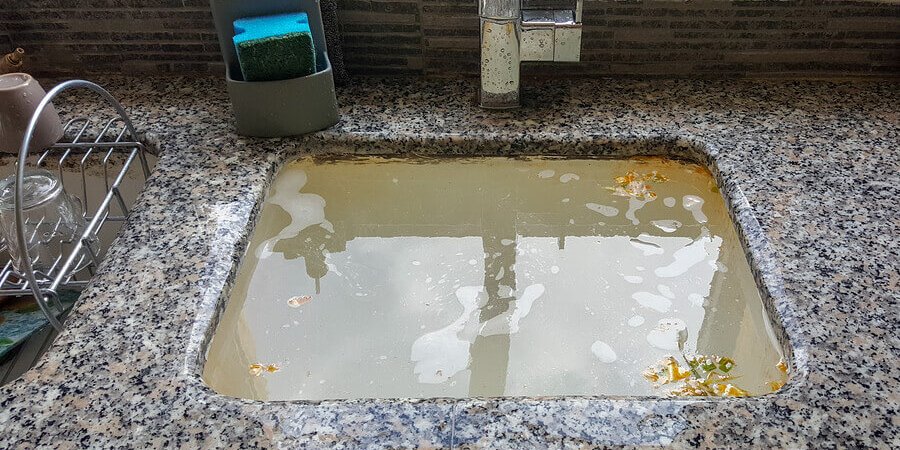We've found the article about How to handle a clogged drain in your home directly below on the net and thought it made perfect sense to discuss it with you on this page.

Introduction
Taking care of a blocked drainpipe can be an irritating experience, interfering with day-to-day tasks and possibly triggering damage to your residential property. Nonetheless, before reaching out to pipes professionals, there are steps you can require to attend to the issue on your own. In this guide, we'll explore do it yourself services and preventive measures to take on an obstructed drain effectively.
Determining the Issue
The very first step in attending to an obstructed drain is identifying the signs. Slow-moving water drainage, gurgling sounds, foul odors originating from drains pipes, or water backing up are common signs of an obstructed drain. Identifying these signs early can assist prevent further problems.
Choosing the Right Plumbing Service
When picking a pipes service, take into consideration factors such as experience, licensing, and consumer reviews. Pick a reliable plumber with a record of quality craftsmanship and transparent rates methods.
Expense Factors to consider
The cost of professional drainpipe cleaning company can vary depending upon the seriousness of the blockage and the plumber's prices. Request quotes from multiple service providers and ask about any type of additional charges to guarantee openness and prevent shocks.
Security Measures
When attempting do it yourself drain cleaning, focus on security. Put on protective handwear covers and eyewear to prevent contact with unsafe chemicals or bacteria. Never blend various drainpipe cleansing items, as this can produce dangerous fumes.
Situation Researches
Real-life instances highlight the effectiveness of DIY services and the value of prompt professional intervention in dealing with drain blockages.
Usual Root Causes Of Blocked Drainpipes
Comprehending the factors that add to drain clogs is vital for efficient resolution. Usual wrongdoers include hair, soap residue, grease, food debris, and international things like hygienic products or paper towels. Tree origins attacking below ground pipes can additionally cause substantial blockages.
DIY Solutions
For small obstructions, several do it yourself services can be reliable. Putting boiling water down the drainpipe can help liquify grease and debris. Sodium bicarbonate and vinegar or a blend of salt and cooking soda can function as natural cleansers. Using a plunger or pipes snake to dislodge blockages is an additional option.
Tools and Devices
Having the right devices available can make do it yourself drainpipe cleansing more efficient. A plunger is a flexible tool for removing obstructions in sinks, commodes, and showers. A plumbing snake or auger can reach deeper clogs, while drainpipe cleansing chemicals can be used very carefully for stubborn blockages.
Preventive Measures
To stay clear of future obstructions, adopting safety nets is crucial. Mount drainpipe guards or strainers to catch hair and particles before they enter the pipelines. On a regular basis flush drains pipes with hot water to dissolve grease build-up, and prevent taking care of oil or solid waste away.
When to Call a Professional
While do it yourself solutions can settle minor obstructions, certain indicators indicate the demand for expert assistance. Relentless blockages, foul odors regardless of cleaning up efforts, or multiple drains supporting at the same time are warnings that necessitate expert intervention.
Final thought
By adhering to the pointers outlined in this guide, you can properly tackle blocked drains pipes and prevent future plumbing issues. Whether opting for DIY solutions or looking for specialist help, punctual activity is crucial to preserving a healthy pipes system and maintaining the integrity of your home.
How to Clear a Clogged Drain Yourself (And When to Call In the Professionals)
What Can Clog a Drain
Dirt Skin flakes Hair Grease Soap scum Food Offset pipes Tree roots Small objects Mineral buildup DIY Tricks to Unclog a Drain
You can fix this! Once you have identified the source of the clog (or have a vague idea), you can try one or a combination of these fixes in order to clear your plumbing.
Wire Hanger or Snake
Untangle and clear out hair from a drainpipe with a homemade snake. Use a straightened-out wire hanger with a 90-degree angle hook to locate the clog and drag out any unwanted material.
Remember not to push the clog further down to where the wire hanger cannot reach! If you need to follow up with a plunger, give it a try. Your efforts might be more successful after it’s been wire-snaked.
If you want to get fancy and don’t have a wire hanger to spare, head to the store and pick up a hand-operated drain snake. You can get one for $10-$30. It may save you the hassle, and provide additional length to reach deep into the clogged pipe.
Plunger
A cup plunger has a suction cup attached to a wooden handle. The rubber creates a seal around the drain, and increases the pressure force of the plunger.
Plunge for 30-second increments to loosen the clog. This may need to be repeated over the course of 15-20 minutes. Once plunged, run the water to flush the remaining material out of the drain.
Remember– never use a plunger if you have used a chemical drain cleaner. These chemicals can splash up from the force of the plunger and cause serious injury or burns.
Boiling Water
Hot water can sometimes break up materials into a flushable amount. Dirt, grease, and soap buildup requires heat in order to unstick from surfaces.
Take your kitchen kettle and heat your water to a boil. Once it reaches a rolling boil, pour it directly down the drain into the blockage. Carefully follow with plunging, if necessary.
Don’t worry if this takes more than one try! It can often take multiple kettles and repeated plunging in order to clear a particularly stubborn clog.
Chemical Drain Cleaner
As a last resort, pick up a bottle of chemical drain cleaner. Drain-cleaning chemicals are potent, and not very good for the environment.
You may need to wear protective eyewear in gloves before handling your bottle of chemical drain cleaner. Follow the instructions printed on the bottle, and flush with water as soon as the instructions allow. Do not follow with plunging.
Baking Soda and Vinegar
As a safer alternative to chemical drain cleaner, baking soda and vinegar can create a chemical reaction that clears tough clogs.
Combine one cup of cleaning vinegar with one cup of boiling water, and set aside. Once you have done this, pour half a cup of baking soda down the drain. Give the baking thirty seconds to settle and cover a large portion of the problem drain.
Following the baking soda, pour down your vinegar and hot water solution. Once the vinegar and baking soda combine, the mixture will bubble and fix. Let this reaction fizzle in the drain for about an hour.
After an hour, follow with a kettle’s worth of hot water. The heat and liquid should flush out any remaining material.
When to Call a Plumber
If your DIY attempts haven’t cleared your clog drain, it’s time to call in a professional. It’s not worth losing access to your kitchen sink or high-traffic bathroom. A clog in a vital area can keep you from the things you’d rather be doing, and derail your routine.
Anytime a clog is causing water to spread is a time to call in a plumbing service. What starts out as a little bit of water can quickly grow into serious, expensive water damage.
Additionally, a serious clog can result in burst pipes or serious leaks. Make sure you know when to take it seriously!
https://myguysnow.com/how-to-clear-a-clogged-drain-yourself-and-when-to-call-in-the-professionals/

Hopefully you enjoyed our post about 8 Tips For Clearing A Blocked Drain. Thanks a lot for taking a few minutes to read through our post. Feel free to take the opportunity to share this entry if you liked it. I recognize the value of your readership.
Click Here